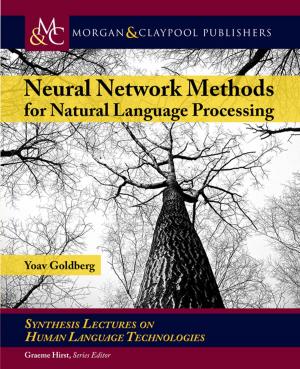Ontology Engineering
Nonfiction, Computers, Advanced Computing, Artificial Intelligence, Internet, Web Development, Programming| Author: | Elisa F. Kendall, Deborah L. McGuinness, Ying Ding, Paul Groth | ISBN: | 9781681735221 |
| Publisher: | Morgan & Claypool Publishers | Publication: | April 26, 2019 |
| Imprint: | Morgan & Claypool Publishers | Language: | English |
| Author: | Elisa F. Kendall, Deborah L. McGuinness, Ying Ding, Paul Groth |
| ISBN: | 9781681735221 |
| Publisher: | Morgan & Claypool Publishers |
| Publication: | April 26, 2019 |
| Imprint: | Morgan & Claypool Publishers |
| Language: | English |
Ontologies have become increasingly important as the use of knowledge graphs, machine learning, natural language processing (NLP), and the amount of data generated on a daily basis has exploded.
As of 2014, 90% of the data in the digital universe was generated in the two years prior, and the volume of data was projected to grow from 3.2 zettabytes to 40 zettabytes in the next six years. The very real issues that government, research, and commercial organizations are facing in order to sift through this amount of information to support decision-making alone mandate increasing automation. Yet, the data profiling, NLP, and learning algorithms that are ground-zero for data integration, manipulation, and search provide less than satisfactory results unless they utilize terms with unambiguous semantics, such as those found in ontologies and well-formed rule sets. Ontologies can provide a rich "schema" for the knowledge graphs underlying these technologies as well as the terminological and semantic basis for dramatic improvements in results. Many ontology projects fail, however, due at least in part to a lack of discipline in the development process. This book, motivated by the Ontology 101 tutorial given for many years at what was originally the Semantic Technology Conference (SemTech) and then later from a semester-long university class, is designed to provide the foundations for ontology engineering. The book can serve as a course textbook or a primer for all those interested in ontologies.
Ontologies have become increasingly important as the use of knowledge graphs, machine learning, natural language processing (NLP), and the amount of data generated on a daily basis has exploded.
As of 2014, 90% of the data in the digital universe was generated in the two years prior, and the volume of data was projected to grow from 3.2 zettabytes to 40 zettabytes in the next six years. The very real issues that government, research, and commercial organizations are facing in order to sift through this amount of information to support decision-making alone mandate increasing automation. Yet, the data profiling, NLP, and learning algorithms that are ground-zero for data integration, manipulation, and search provide less than satisfactory results unless they utilize terms with unambiguous semantics, such as those found in ontologies and well-formed rule sets. Ontologies can provide a rich "schema" for the knowledge graphs underlying these technologies as well as the terminological and semantic basis for dramatic improvements in results. Many ontology projects fail, however, due at least in part to a lack of discipline in the development process. This book, motivated by the Ontology 101 tutorial given for many years at what was originally the Semantic Technology Conference (SemTech) and then later from a semester-long university class, is designed to provide the foundations for ontology engineering. The book can serve as a course textbook or a primer for all those interested in ontologies.















